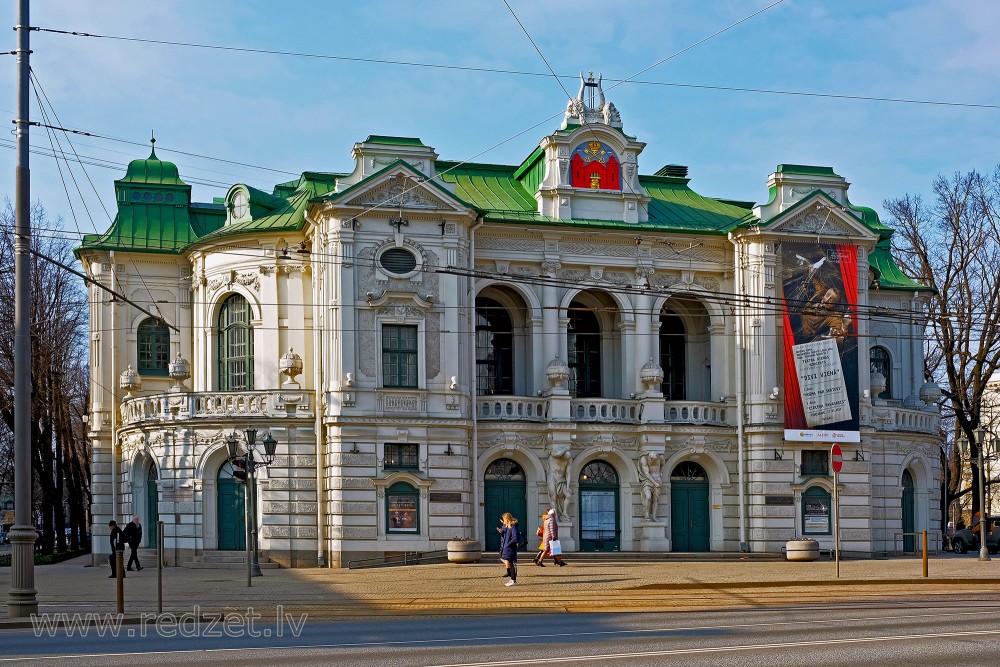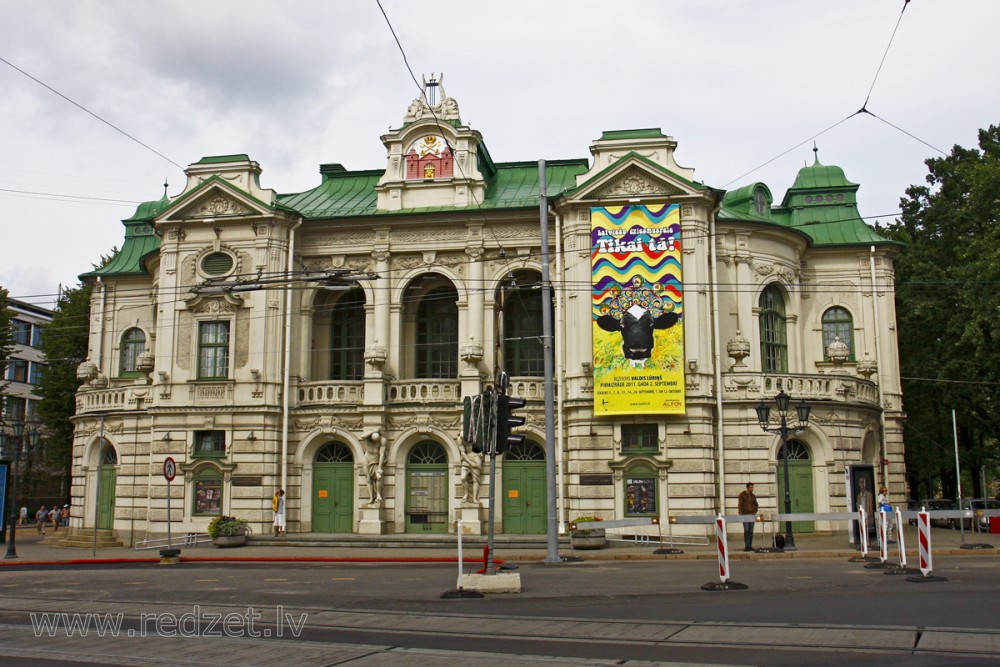Kronvalda bulvāris 2, Riga
The Latvian National Theatre (Latvian: Latvijas Nacionālais teātris) is one of the leading professional theatres in Latvia. It is a modern theatre that is proud of its 100-year history. The building is in eclectic style and it is an architectural and art monument. The country Latvia was proclaimed in this building in the year 1918. On 23rd of February, the theatre will celebrate its 100th anniversary. The director of National Theatre of Latvia from the year 2006 is Ojārs Rubenis.
Kronvalda bulvāris 2, Riga
+371 67006300
info@teatris.lv
www.teatris.lv
Main mission
The mission of Latvia’s National theatre is to be the centre of national culture and art with the goal to introduce the art of theatre and current events in culture through national values, to an even bigger part of society.
Latvia’s National theatre’s vision for the future is to theatrically concentrate theatre’s, art’s and culture’s most valuable pieces, by regularly introducing Latvian classics, original work, foreign theatre experience and current events to the viewer.
There are also plans to include the most interesting and the most talented professionals, continue the development of theatre as an art form, as well as strengthen the collaboration between theatres and other cultural organizations.
The guidelines for the National theatre’s development ensure the chance for the viewer to be introduced to all the events happening in the life of theatre in Latvia and with the most valuable foreign plays, as well as an opportunity to be a part of some of the best National theatre’s plays that are in the international circle.
Location
Located in the centre of Riga, just outside the Old Town, it stands next to the canal in a park where the Citadel used to be. Latvian National Theatre is situated in the centre of Latvia capital city Riga, on the bank of Riga canal.
History
In 1897 Riga’s city council decided that it was not enough to have just one theatre in Riga. Riga’s first theatre was the German Theatre, currently the Opera House. A competition was held to choose the design of the new building. The Augusts Reinbergs project "Dum spiro, spero" ("While I breathe, I hope") won and construction began. The theatre was opened to the public on 14 September 1902 as Riga’s Russian language theatre and held both theatre and opera performances. Although this was Russian language theatre, by 1917 Riga Latvian Society was renting the premises to hold plays in Latvian.
During the First World War the theatre was evacuated, but by 1918 it was already back in business, and on 15 October staged Richard Wagner’s The Flying Dutchman. Just over a month later, Latvia announced its independence for the first time, with the declaration being read from the theatre’s stage. The only remaining photograph from this historic event was taken in the theatre’s main hall.
In 1919, during a brief period of Bolshevik rule, the makeshift government named it the Workers’ Theatre, but it became the Latvian National Theatre soon after and on 30 November the official opening took place with a staging of Rūdolfs Blaumanis "Ugunī" ("In Fire"). The creative program was authored by Jānis Akurāters, a Latvian writer, then head of the Art department of the Ministry of Education.
During the Soviet occupation, the Latvian National Theatre could not keep its nationalistic name, so it became Riga’s Dramatic Theatre, only to revert to the previous name upon the restoration of independence 40 years later.
The current managing director of the theatre is Ojārs Rubenis and the artistic director is Edmunds Freibergs
Layout
The building is a combination of style; in the facade you can recognise both eclectic and baroque features as well as elements of Art Nouveau, which was extremely popular in Riga at the time. The interior is very functional, but in the various decorations you can find elements of classicism. There are 3 halls in the theatre – The Great hall (with 750 seats), The Actors hall (with, depending on the play, 50-90 seats), and the LMT New hall (with, depending on the play, 60-120 seats). Some seasons there is a 4th hall "The Horror Bus", where a play with that name will be held for kids.
en.wikipedia.org









